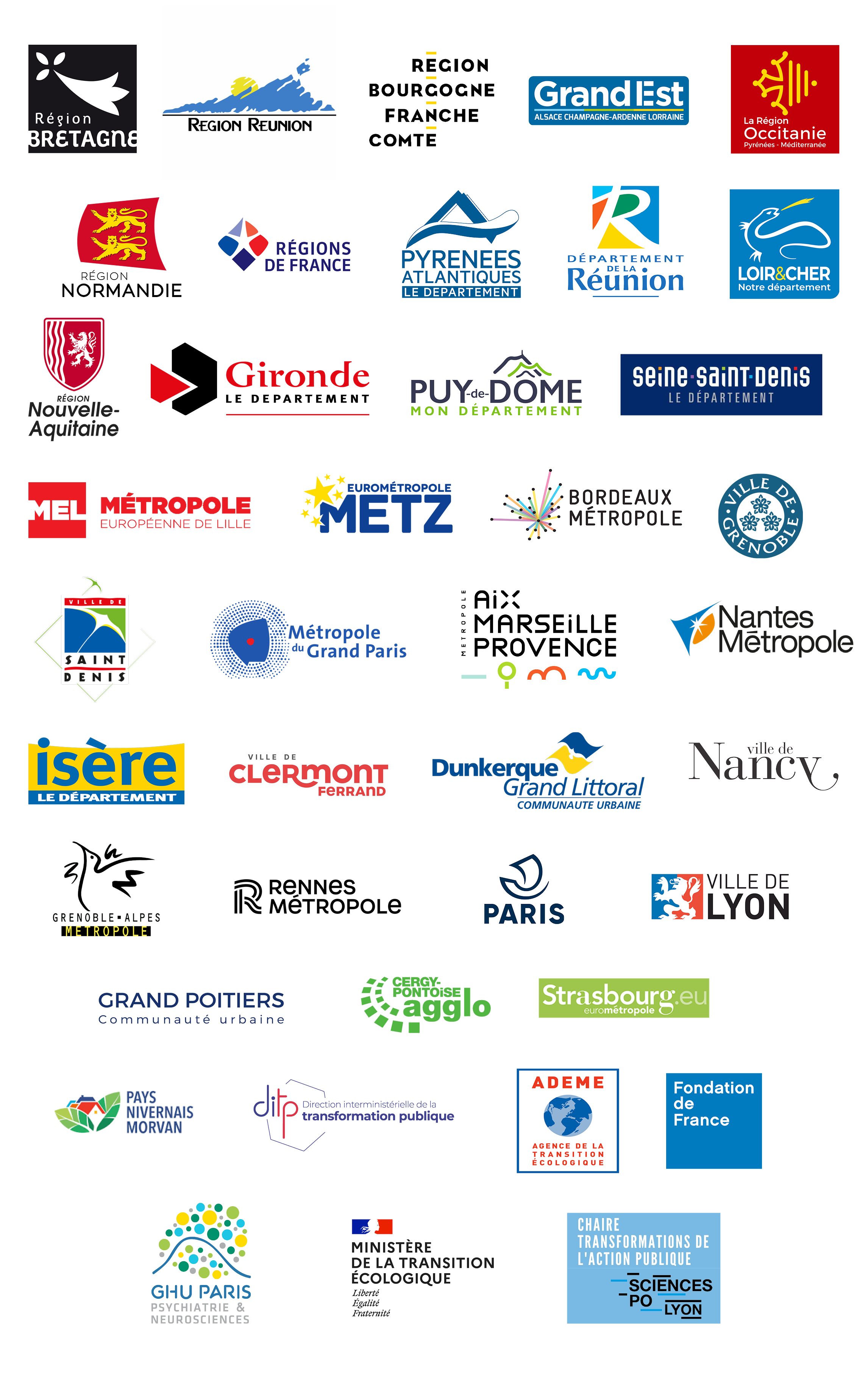How should the building of public capabilities be adapted to the world to come based on the administrative experiments that took place during the peak of the pandemic? What task forces should be organized, collectively, to reinforce the resilience of France’s territories ? in confronting future crises?
To answer these questions, the 27e Région got together with the agencies Vraiment Vraiment and Parties Prenantes to initiate last May the Reflexes Publics project, a collaborative field investigation on public transformation during periods of crisis. With the support of the Délégation Interministérielle de la Transformation Publique (DITP – lnter-ministerial directorate for public transformation), the Bloomberg Philanthropies Foundation and around ten public innovation labs, more than fifty interviews were carried out covering six major controversies and documenting around ten administrative phenomena generated by the crisis. The team spoke with the CCAS (municipal centers for social action), garbage collection services, managers of community centers, HR managers, DGS (general directors of services/chiefs of staff), childcare assistants reassigned to Ehpads (residences for the elderly), leaders of participative budgets, a social action director, a manager of public-owned housing… to obtain a global picture of this period so very unknown.
Based on these interviews, the team drafted around twenty possible concrete paths to follow to arrive at what it considered to be desirable and structuring emerging transformations. A report on their findings will be published in the weeks to come. In the meantime and to whet your appetite, here are six initial proposals as a preview of their work!
A professional micro-mobility policy
The reassignment of agents was a recurrent phenomenon during management of the crisis, with the forms and means implemented varying from one municipality to another. In one, reassignment was undertaken by human resources management, in another via citizen participation, or still another by the leaders of innovation labs. All were based either on volunteering or on appointment, and were sometimes spurred by an economic incentive in addition to the employee’s salary.
However diverse the origin, each of these practices represents the same challenge of reallocating the workforce to vital services to face the immediate health emergency. Could this signify the beginning of a new HR culture based on valorizing versatility, the capacity of agents to adapt to changing contexts and a sense of commitment?
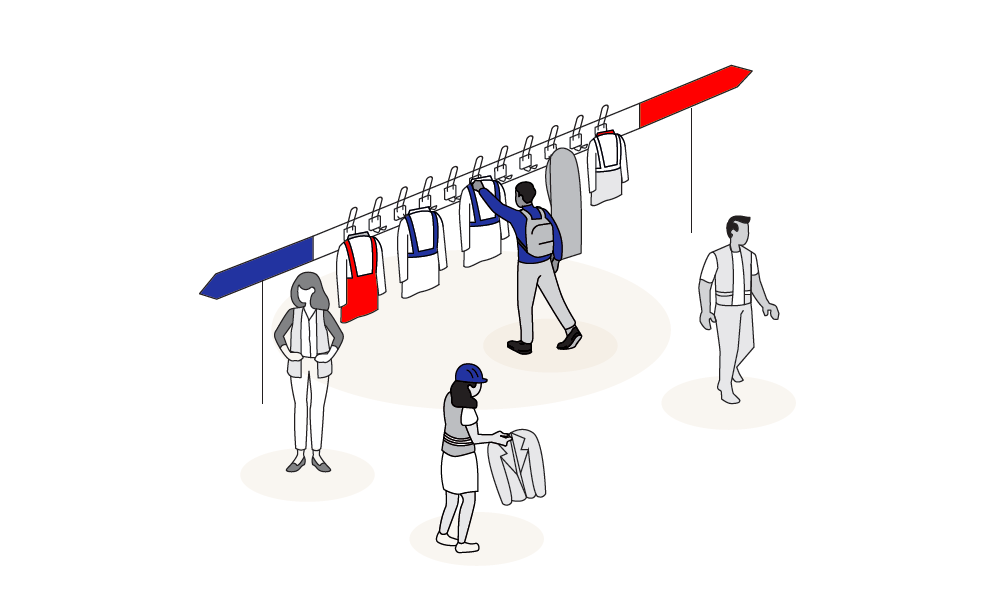
illustrations : Vraiment Vraiment
Whereas reallocating human resources has always represented a major challenge in terms of public management, these experiments could very well serve as an inspiration for rethinking HR strategies in this regard. Answering the call for the emergency redeployment of agents, the reassignment schemes also serve as “daily exercises” in professional mobility over the longer term. Enough so that a taskforce focussed on “systematizing and ensuring the sustainability of these schemes” could be set up to act as a lever for developing the capacity of agents to adapt to new situations and to make changes in their professional careers.
Viewed as a new field of action in managing human resources, a policy of professional micro-mobility would set as its goal to 1) anticipate changes and organize the temporary reassignment of agents during tense periods, and 2) detect, promote and develop “secondary” capabilities by preparing together with the agents “personal reassignment plans”. To accomplish this, the goal of the policy could be to help agents identify their fields of interest and capabilities (valorize knowledge/skills unrelated to their work, encourage them to express their wishes) and also to strengthen the ability of managers to detect potential. The municipality could set up a system of “volunteer days” that are encouraged and taken during agents’ customary workdays on a one-day-a-month basis so as to constitute a pool of “voluntary agents”, open to all who wish to participate.
Medico-social savings indicators
By imposing the distancing of relations, the lockdown profoundly changed the relationship between the administration and the user/citizen. It forced municipal/regional governments to adjust administrative procedures to adapt to this never-before-seen context and to avoid degrading the situation of citizens already adversely affected by the crisis. Two practical means to ensure this were explored in particular: the setting up of a call platform for vulnerable citizens by the départements and the CCAS (municipal centers for social action), and the deployment of support units to establishments caring for vulnerable persons. Both these schemes were developed at a very large scale: over 50 000 calls were made to the platform of a département and nearly 300 establishments caring for the vulnerable were provided with support organized by the management of one municipal social action center. Each in its own way has made a change in the paradigm regarding the manner in which a social service is obtained, switching from a “step up to the window” approach to a “go-to” approach: “go-to” the users, anticipate their needs.
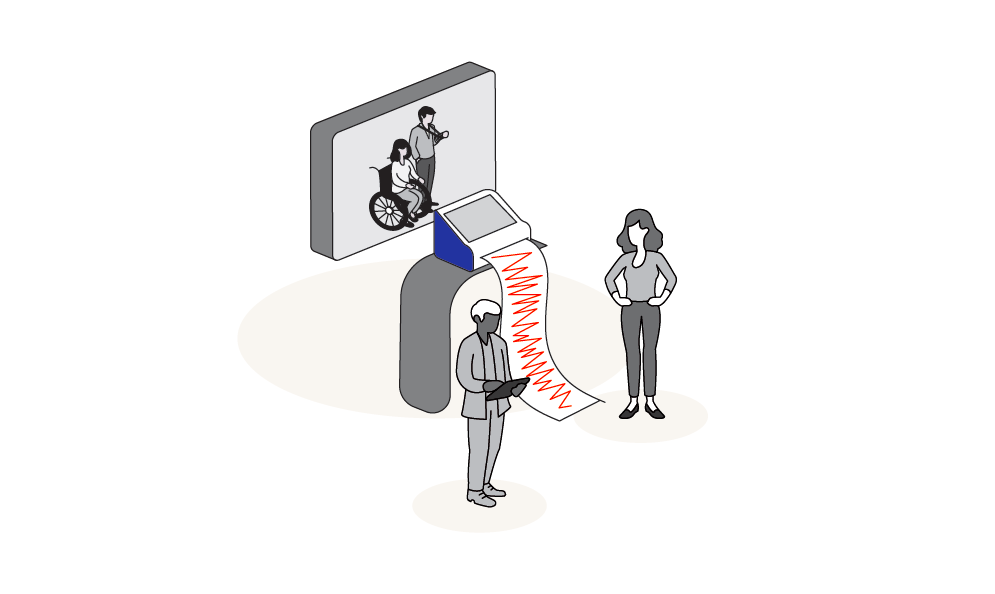
But how much does all this cost? Municipalities “didn’t count” the cost during the crisis and the expenditure sheets are a difficult reality. If the post-crisis period risks being just as demanding for social services, the resources available will be more moderate. To ensure the sustainability of “go-to” practices, the investments made and the costs avoided must be assessed. How can indicators for medico-social savings be constructed? Alternative accounting, such as CARE (Comprehensive Accounting in Respect of Ecology) could be of help. Why not start by applying the new evaluation model for costs that were avoided as a result of the call platforms for vulnerable users/citizens ?
Developing trusted data to build technical and democratic safeguards
Given the increased difficulty for users to express their needs and the risk of a post-lockdown social services “tidal wave”, municipal governments have adopted a proactive posture for identifying needs. This is accomplished via access to users’ data: registry data for organizing the distribution of masks and for identifying “vulnerable” users, making it possible to contact them. Based on exploiting the available data of users “in good faith” but outside regulatory frameworks, these procedures are confronted with the ethical limits of such practices and the misappropriated exploitation of users’ data.
How can these practices, which are likely to increase in the event of repeated crises (heat wave, pollution peak, etc.), be framed from an ethical standpoint?
In managing users’ sensitive data, municipal/regional authorities are confronted with major challenges in terms of data governance (who decides that users’ sensitive data can be exploited?) and safeguarding (what technical solutions and which data governance frameworks to limit risks?). These questions lead to searching for a management model for users’ data to be employed as a common good, and not as a resource belonging to a single private player and where the community of users (local/regional authorities, citizens, etc.) together defines the rules for data exploitation, so as to maintain this resource viable.
Rather than identifying the frameworks for user data exploitation beforehand, deliberative bodies or surveillance committees could be set up allowing for a more open governance, better transparency and a space for debating the exploitation “outside the framework” of these data. By means of a technical lever, it might be possible to imagine handing over to the user him/herself management of his/her portfolio of data by guaranteeing technically the respect of his/her choice to communicate, or not, certain sensitive data to the administration. To begin with, municipalities could simply bring together their data protection officers (DPO) and the management of citizen participation activities.
Data labs to operationalize available data
Statistics regarding stored products, changes in hospitalization rates… before and during the crisis, access to statistical indicators constituted a definite advantage for anticipating how best to adapt to it. Could this be the sign of the coming of a much-awaited governance of cities based on data? The crisis, a crash test at real scale of this new “black gold”, instead revealed rather artisanal practices regarding strategic data: a “homemade style” collection of data pertaining to Covid cases, a unit of field informers, a PowerPoint report on the director’s desk.
This points out in particular to the limits of a data culture based on the resource (data collection, storage and sharing), rather than on their exploitation (in decision-making and the production of services). Despite management units of structured data and a significant access capacity, many decision-makers simply did not “issue an order”, which led to cases of data under-exploitation, and this raises questions.
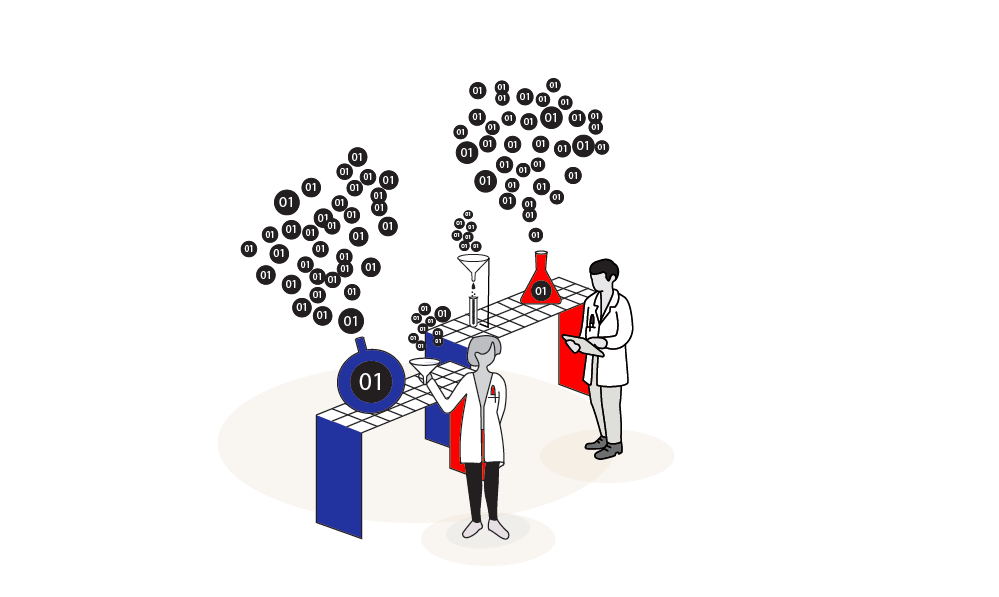
The team sees here the signs for a taskforce to work on “data operationalization” in crisis management and more especially in city governance, with the management of user-centered data as the key focus. Inspired by public innovation laboratories, these “data labs” could experiment with an offer to assist the initiation of new public policies or projects, starting with the questions of the project sponsors and converting their issues into indicators and data. To initiate this change as of right now, why not engage data scientists in the post-crisis stimulus plans?
Citizen reactivity schemes, a new weapon in the participative arsenal
Caught up short by the lockdown, local/regional authorities ran up against the necessity to transform the public space to adapt to new restrictions in regard to physical distancing tied to the Covid pandemic: creation of bicycle paths, pedestrianization of some streets, widening/extension of sidewalks and terraces. The challenge was therefore to assist the immediate re-composition of uses while guaranteeing a functional public space. But the reactivity imperative of these installations of a new type did not eliminate the need for involving users, experience having proven that their participation is key to the success of any town planning scheme.
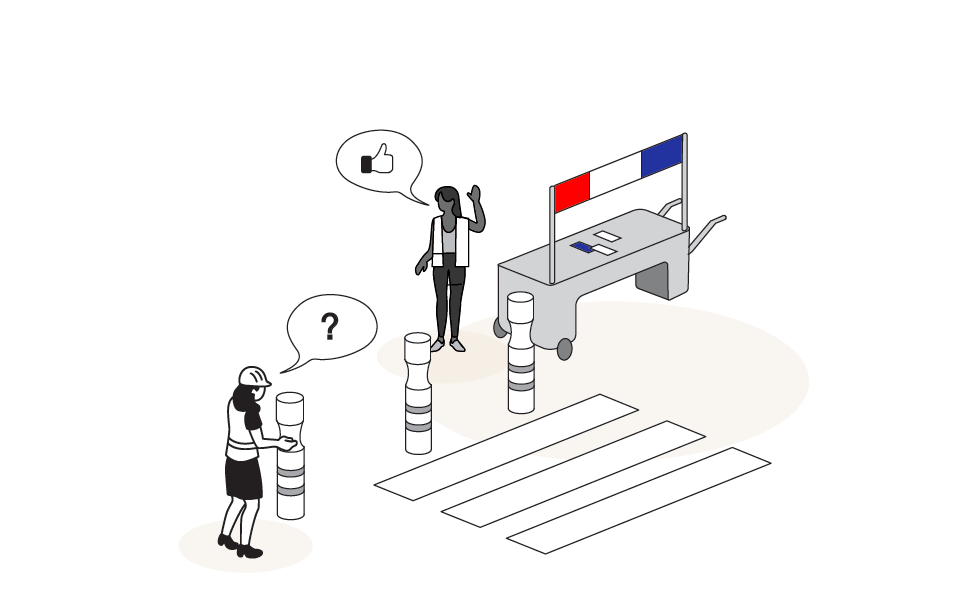
Which brings us to enlarging the place reserved for user participation on these projects both very early on, to initiate discussion before the crisis, namely by mobilizing citizens to participate in preparing the development plan, and also following the changes made in the urban landscape. Citizen participation after the fact is also useful, not to work on the specifications for urban installations of this type, but in regard to their multiple future developments and their capacity for change over time, to ensure they are as close as possible to users’ needs. In short, users must participate in the continuing adaptations of these installations, which forms an integral part of the rationale of experimentation.
The question of what is to become of temporary installations, and namely the “corona bicycle paths” could provide an excellent opportunity to experiment with a participative evaluation procedure retrospectively. Users could be mobilized to help define indicators (intensity of uses, feelings), design a monitoring scheme and devise a way for adjusting the installations.
DLR (Dispositifs locaux de resilience): Local resilience schemes
The closing of distribution premises, the brutal drop in the number of volunteers, the health risks weighing on the teams and volunteers – with the crisis weakening the activity of emergency assistance associations, local/regional authorities stepped in to guarantee the continuity of solidarity actions in complement to government intervention. In the interviews carried out, the team investigated the manner in which food aid and aid to isolated elderly persons was able to be maintained in the emergency context. Between taking charge of the action, mobilizing replacement volunteers, making resources available, assuming the position of responsible entity… the successive mutations and the intensity of the interactions between associations and the public authorities served to renew the relationship between these players.
More specifically, they underlined their interdependence: for the public player, the role of safety net and support for their associative partners to help them “get back on their feet”; for the associations, the role of becoming the relay as soon as they became operational and of making the best possible use of the resources make available by the public player.
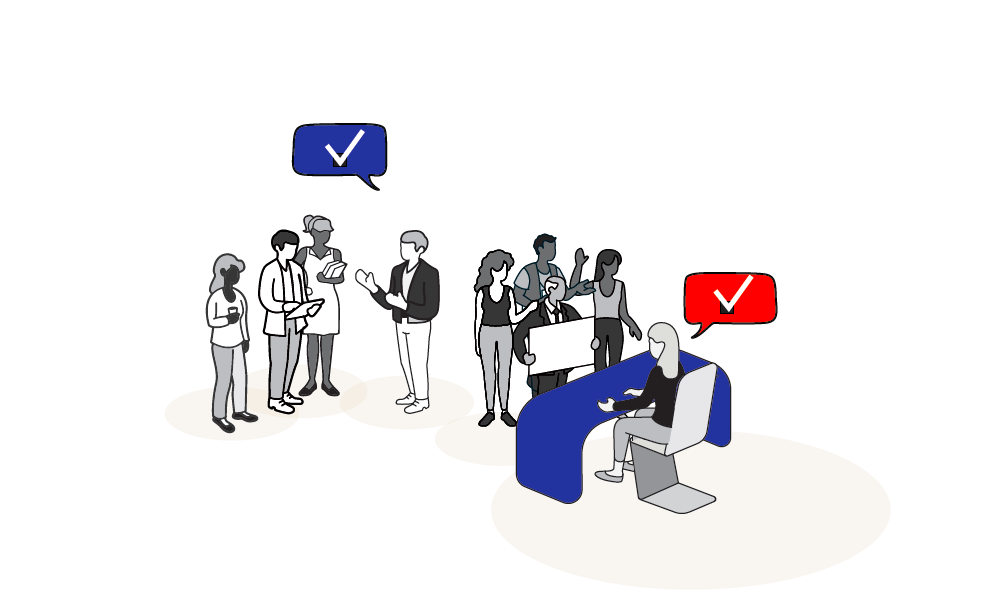
The policy for assisting associations could be oriented towards integrating the lessons learned from the crisis, reaching more towards providing support for the associative fabric. By developing the “resilient” counterpart of the successful DLA (local assistance) schemes, the policy would provide a framework for associations and public players to work together on public schemes for logistical support (“the CCAS (municipal center for social action) was very present on a logistical level: container for refuse, packaging (which was lacking), chauffeur, delivery of food when there was a surplus”), for general coordination (“highly effective coordination work carried out by the DDCS (Directorate départemental of social cohesion) between remote associations, between open and closed associations”) and even for the constitution of a reserve corps of volunteer agents and/or citizens.

